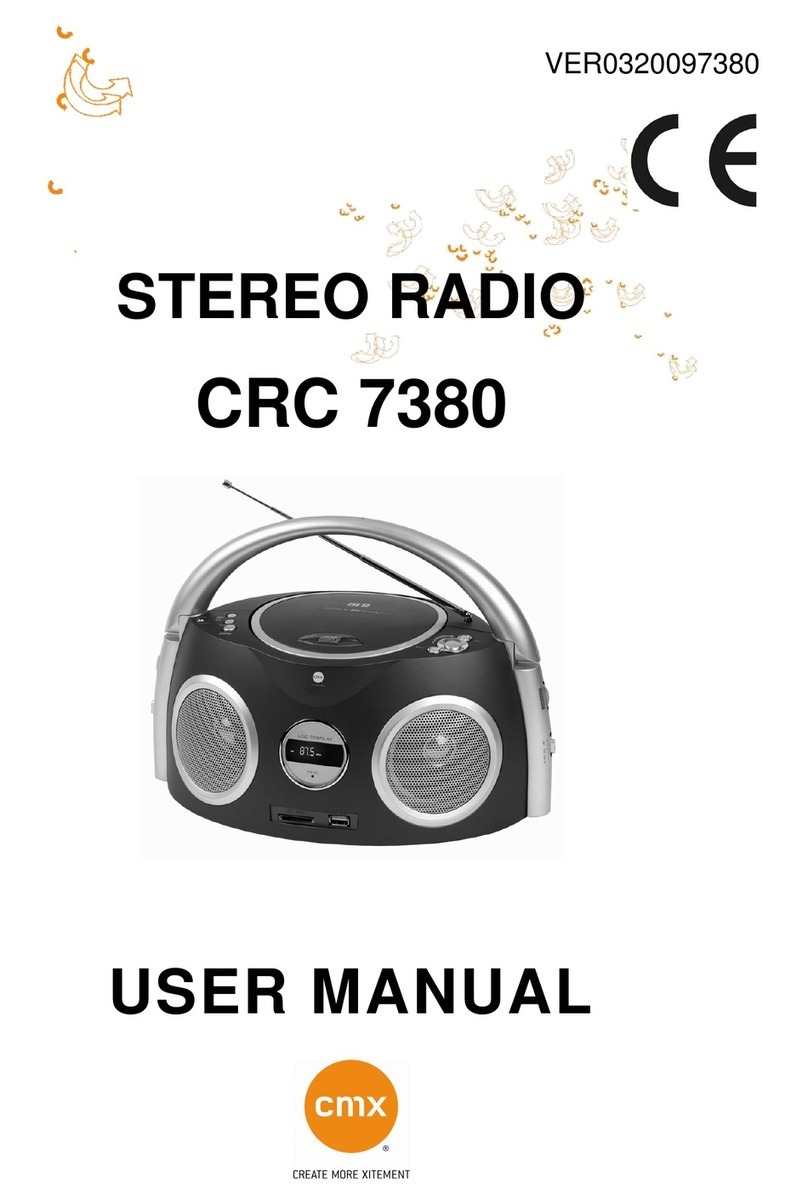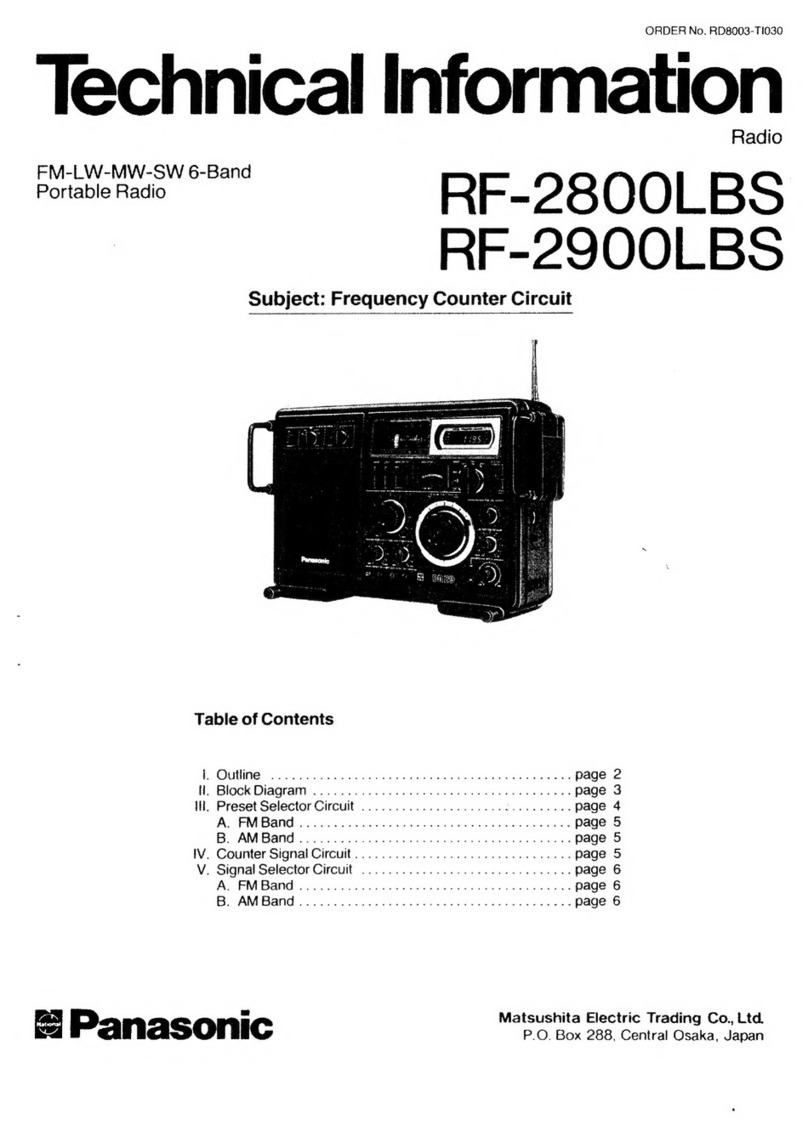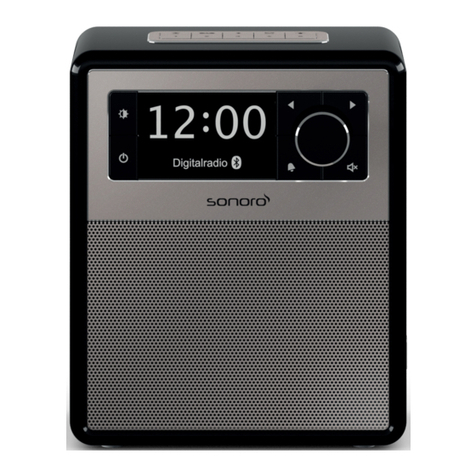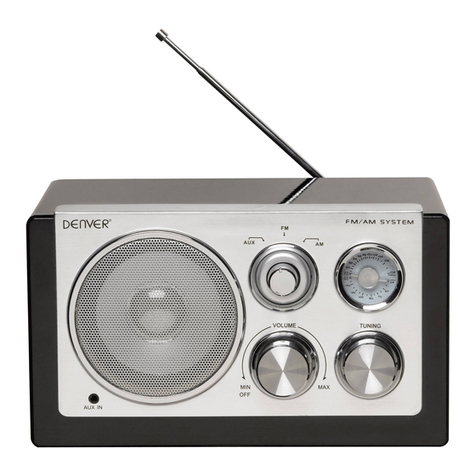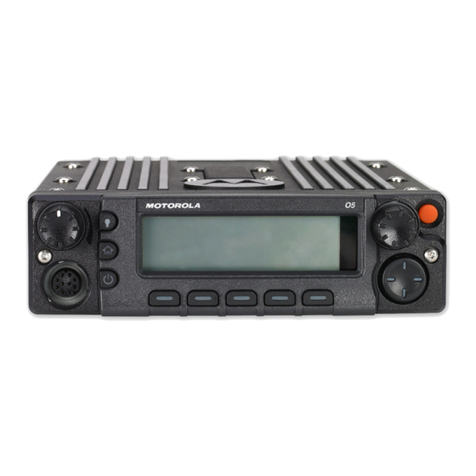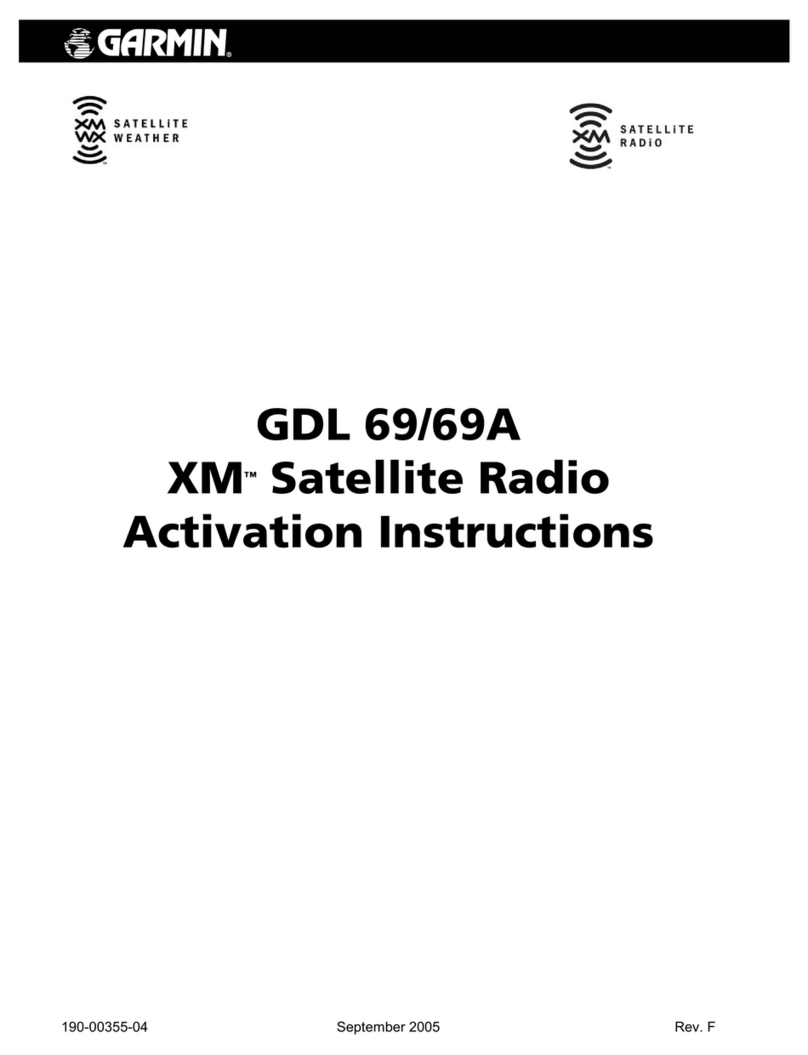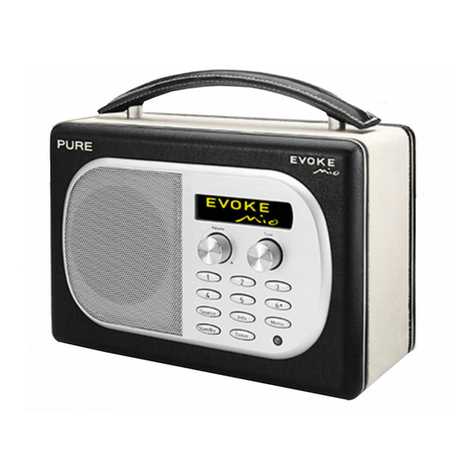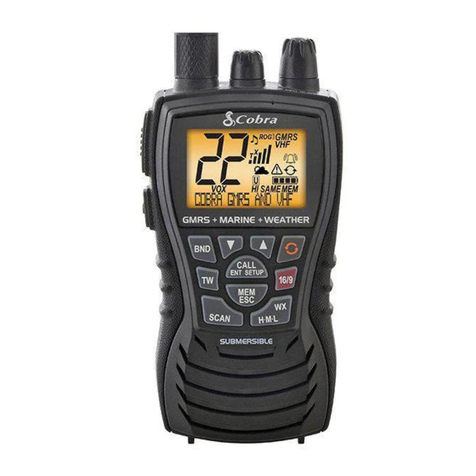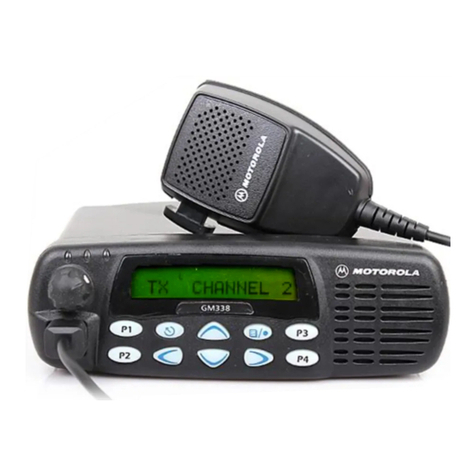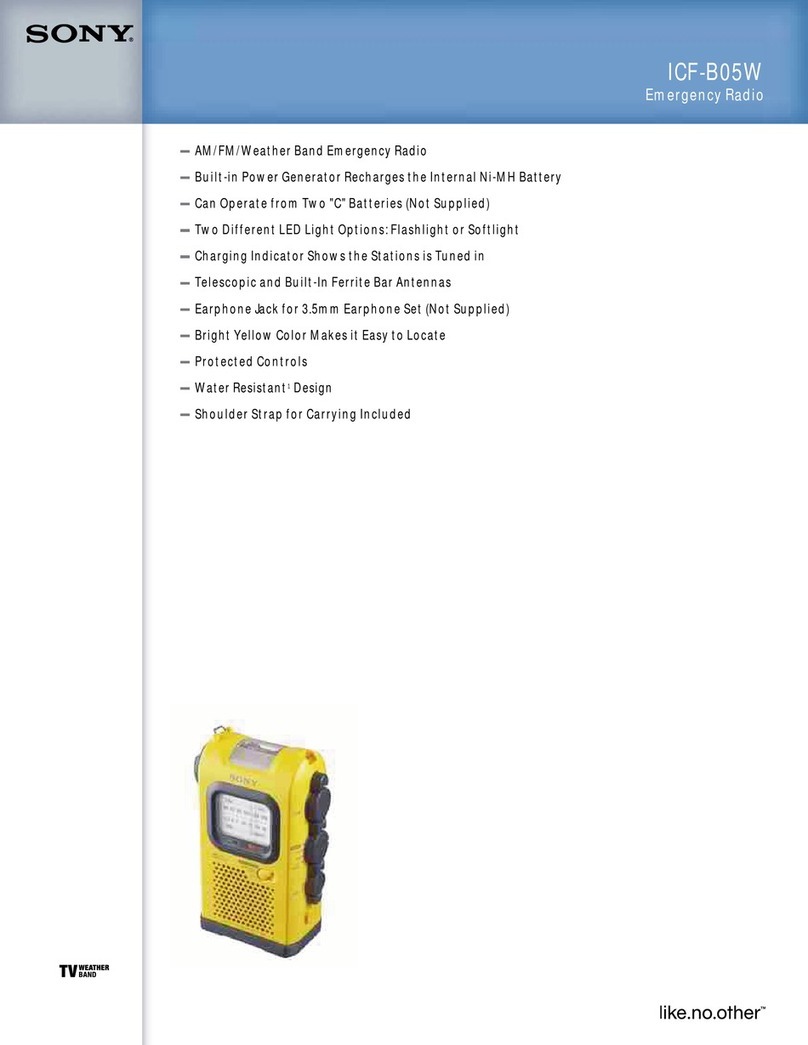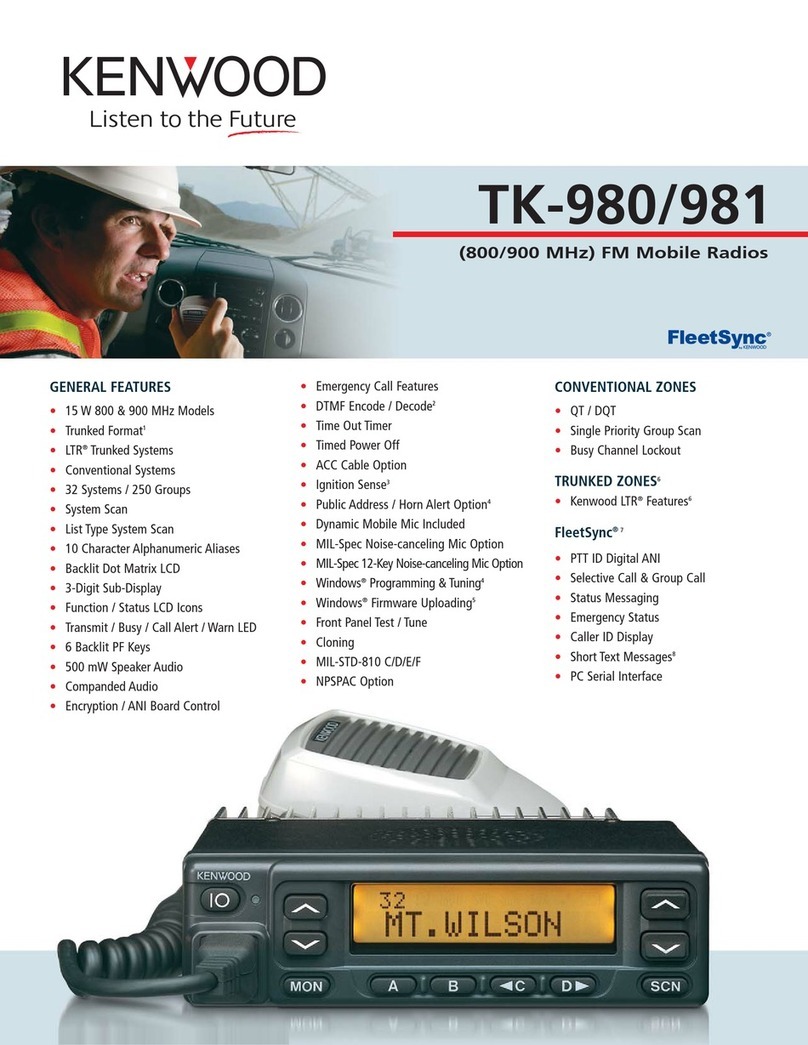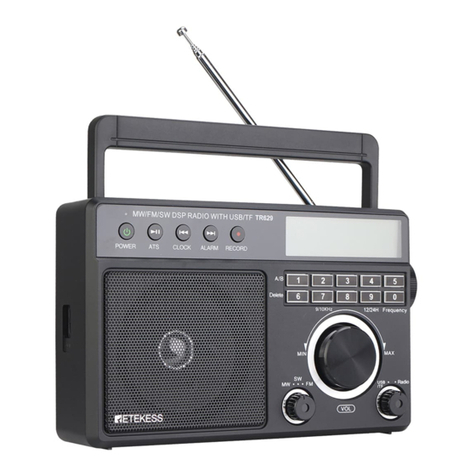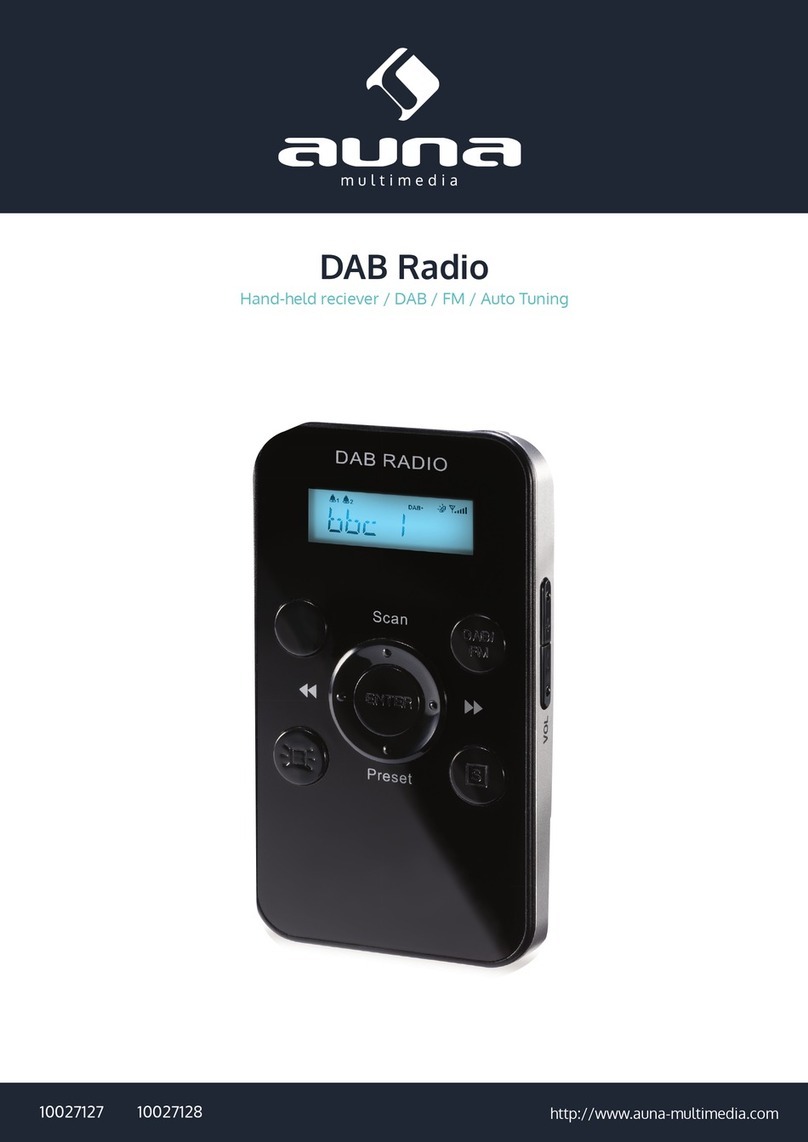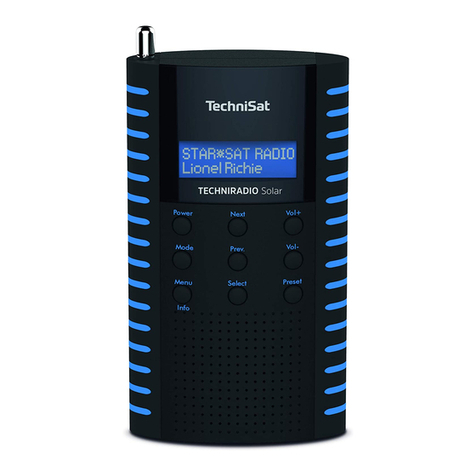Telecard R-002PP User manual

VHF RADIO R-002PP
Operation manual

4424.027.61 p.2
Contents
1
Description and Performance
6
1.1
Purpose
6
1.2
Technical Specifications
7
1.3
Configuration
9
1.4
Component Parts Description
16
1.4.1
Transceiver
16
1.4.2
Headset
20
1.4.3
Antenna
22
1.4.4
Battery Pack
23
1.4.5
Battery Chargers -1001 (-1002)
25
1.4.6
Fillgun
28
1.4.7
Assembly Parts Set
29
1.5
Radio Control
29
1.6
Meters, Tools and Accessories
30
1.7
Marking and Sealing
30
1.8
Packaging
31
2
Proper Use
36
2.1
Operating Limits
36
2.2
Provisioning
36
2.2.1
Safety Precautions
36
2.2.2
Getting Started
37
2.2.3
Turning the Radio On
38
2.2.4
Turning the Radio Off
39
2.3
Use of the Radio
39
2.3.1
Mode Selection
39
2.3.2
Indication Sheet after the Radio Initialization
39
2.3.2.1
General Information
39
2.3.2.2
Supplementary Data on Fixed Frequencies Indication
43
2.3.2.3
Supplementary Data on FHSS Mode Indication
44
2.3.3
Settings Entering from the Front Panel
44
2.3.3.1
Frequency Adjustment from the Front Panel
44
2.3.3.2
Mode (Emission Class) Setting from the Front Panel
46
2.3.3.3
Preset Channel Selection
47

4424.027.61 p.3
2.3.4
Volume Adjust
48
2.3.5
Touch-Tone Call
48
2.3.6
Power Level Setup
48
2.3.7
Operation with the Squelch
49
2.3.8
Selection of the DTE
49

4424.027.61 p.4
1 Description and Performance
1.1 Purpose
The radio, carried by the personnel, is designed to provide tactical communications
both in stationary and battlefield conditions.
The radio provides the possibility to transmit and receive voice and data (digital
information) while operating on the fixed frequencies (non-ECCM mode) and in the ECCM
mode.
ECCM mode of operation is intended to provide radio communication in conditions of
hostile interference setup. Protection from hostile interference is done using the frequency-
hopping spread spectrum (FHSS) mode. Frequency hopping is 312.5 per second. In the
FHSS mode the radio is interoperable with radios of the same type or other radios that are
compatible on data communications protocol in aggregate bandwidths.
While operating on fixed frequencies the radio is compatible with the older radio
systems.
The radio operates in the following modes:
- single-frequency simplex (transceiving on the same frequency while operating on
fixed frequencies, or tranceiving on the same set of radio data in the FHSS mode);
- half-duplex (receive on the one frequency and transmission on the another
frequency while operating on fixed frequencies, or receive on the one set of radio data and
transmission on the another set of radio data in FHSS mode);
- single-frequency simplex (half-duplex) in one radio network and stand-by receive in
the anoter one;
-stand-by power saving receive;
- radiodata entry.
While operating on fixed frequencies and in the FHSS mode the radio provides
transceiving of the following:
-voice information from the telephone headset or directly from the tranceiver;
-data with the rates of 1200, 2400, 4800, 9600 bps from the PC or other devices
at the RS-232 interface;
-SMS messages;
-individual (selective), circular (group) and tone calls.

4424.027.61 p.5
Stand-by power saving receive is advisable to be used to extend operating time of
the radio from one battery pack without recharging.
While operating on fixed frequencies, voice information is transmitted in:
-F3 analog form, which provides connection of the radio through the link with the
radios of other types, older radio systems in particular;
-F1 digital form. Analog voice is converted into digital form by embedded CVSD-
delta codec. The rate of converted voice information is 16000bps.
In the FHSS mode voice information is transmitted only with conversion into digital
form (CVSD) in the F1 class.
Voice information, converted into digital one, either on fixed frequencies or in the
FHSS mode can be transmitted with technical masking or without it. Technical masking can
also be used during data communications. Technical masking is ensured by the built-in
voice-masking device.
The radio provides radio coverage on medium-cross country while the object,
equipped with the radio, is stopped or on the move, with the range of not less than 4-5 km.
Shorted antenna is intended to enhance the radio operation while providing the
communication over several hundred meters range.
The radio can operate on not more than 16 preprogrammed channels on fixed
frequencies (channels 1 to 16), and on not more than 16 preprogrammed channels in the
FHSS mode (channels 17 to 32). The selection of preprogrammed channel is done, using the
buttons on the front panel.
While operating the radio, it is possible to control it and enter radiodata from the PC,
as well as Radio Data Storage and Entry Unit (fillgun) on the RS-232 interface.
The power supply is provided by the (7.2-7.4) V Battery Pack.
1.2 Technical Specifications
1.2.1Frequency Band and Channel Spacing
a) The radio provides continuous coverage in the 30 MHz to 110 MHz frequency
band;
b) Channel spacing on fixed frequencies is 12,5 kHz.
ATTENTION! While operating the older radios or radios of other type, channel
spacing should be appropriate or not less than 12, 5 kHz.
c) Channel spacing in the FHSS mode is 25 kHz

4424.027.61 p.6
1.2.2 Transmitter Specifications:
The power output is the following:
-Nominal power output (2 0,4)W;
-Low power output
Attention! When the radio is in use, it should be noted that the more output power is,
the longer the operating distance is. In nominal power output it is ranged up to 5 km and in
the low power output the operating distance is ranged up to 3 km. However, the more output
power is, the less operating time is, when the radio operates from the battery pack without
recharging, and the line masking is low too. It is advisable to select optimal power output
level when the radio is in use. Shorted antenna is intended to enhance the radio operation
while providing the communication over several hundred meters range.
1.2.3 Harm
1.2.4 Frequency deviation of the transmitter while operating in the F1, F3 classes
should be kHz.
1.2.5 Receiver Specifications:
Sensitivity of the receiver while receiving F3 class radio signal, is not more 0,5 V for
12 dB SINAD.
Sensitivity of the receiver while receiving F1 class radio signal, measured from its
high-frequency input in test signal modulation of digital pseudorandom sequence (215-1) and
-2 is not worse:
-0,5 V while receiving data with the rate of 1200, 2400, 4800 bps
-0,7 V while receiving data with the rate of 9600 bps
Sensitivity attenuation of the signal receiver at the IF image is not less 60 dB, and at
the 1st IF is not less 70 dB.
Intermodulation selectivity of the receiver, measured by the three-signal method, is
not less 60 dB.
The receiver is equipped with the embedded squelch with operation threshold not
more than 1,5 V.
1.2.6 The radio ensures performance control of the embedded fault detection
system, which detects malfunctioning unit accurate within the Standard Substitute Element.
1.2.7 The average number of frequency hops in the FHSS mode is 312.5 per
second.
1.2.8 Power Sources

4424.027.61 p.7
Power supply is ensured by the Battery Pack. The radio provides settings if nominal
voltage of the battery pack is (7,2-7,4)V. Performance control of the battery is done by the
embedded control system. The results are shown on the radio display (front panel of the
Transceiver Unit). Continuous operation time from fully charged battery pack is not less 10
hrs, in transmission time/receive/standby receive ratio as 1:2:8.
1.2.9 Environmental Conditions
The radio operates in the following environmental conditions:
temperature of ambient air is in the range - C);
C);
air pressure is from 60 Pa to 113 P(from 450 to 850 mm.m.c).
1.3 Configuration
1.3.1 Entire complement of radio equipment should be in compliance with the
The major radio components are presented in Table 1.
Table 1 Radio components
Notation of the product, component
Number,
pcs.
Notes
Transceiver VH300
1
Fillgun AV100
1
*
Antenna ANT-R002PP
1
Antenna shorted ANT-R002PP-01
1
Lightweight Headset
1
Lightweight Handset HHS-250MICAM
1
*
Battery pack VH550
2
*
Battery pack VH551
2
*
Battery charger C-1001 with cable 27V
1
*
Battery charger C-1002 with cable 27V
1
*
Assembly Parts Set:
Cable 002 UX1
1
Cable 002 UX2
1
*
Cable 002 UX3
1
*
Cable 002 UX4
1
Packing Tools Kit:
- - 01--
1
- Cover for battery pack -01--
1
- Carrying bag radio - -
1
Packing
1
Set of operational documentation in accordance
.61
1
VHF Radio. Software product
1
CD-R disk
Note - * Package contents modification depends
on delivery specification.

4424.027.61 p.8
Example of record of radio notation during the order:
“2W R-002-PP VHF PORTABLE RADIO -13881657-016:2007
-option-02,
where:
- 2W R-002-PP VHF PORTABLE RADIO -13881657-016:2007
- notation and code;
- notation of technical conditions;
- option-02 delivery option for battery charges and battery packs.
Configuration of delivery options for battery charges and battery packs is
presented in Table 2.
Table 2
Device
Delivery option
00
01
02
03
04
05
Battery Charger -1001
0
X
0
0
X
0
Battery Charger -1002
0
0
X
0
0
X
Battery pack VH-550 (3,7 V; 2,6
X
X
X
0
0
0
Battery pack VH-551 (3,7 V; 3,9
0
0
0
X
X
X
Transceiver is the primary unit of the radio.
Transceiver can provide voice communications, which is available through the built-in
speaker and microphone or the standard headset connector.

4424.027.61 p.9
Figure 1 Radio Assembly Drawing

4424.027.61 p.10
Battery Charger -1001

4424.027.61 p.11
Battery Charger -1002
Figure 2 -1001, -1002 Battery Charger Assembly Drawing
Data communication is provided by the PC or special equipment. The PC or special
equipment is connected to the radio via ATA
radio. Data communication between the radio and the PC and special equipment is available
through the RS-232 interface. Radio operator should choose the data rate from the
permissible range of bit rates, i.e.: 1200, 2400, 4800, 9600 bps. Interface data rate between
the radio and the PC (special equipment) should be 115200 bps.
To operate the radio, all radio components should be taken off from the shipping
container, unpacked and connected according to the radio assembly drawing. Radio
Assembly Drawing is shown in Figure1 and Battery Chargers Assembly Drawing is presented
in Figure 2.
The radio can be carried in the -- Carrying bag radio (hereinafter
referred to as the bag), which makes it easy to use and operate it in the battlefield. The
overall view is presented in Figure 3. The scheme of placing the radio components into the
bag is illustrated in Figure 4.

4424.027.61 p.12
While placing the radio components into the bag, it should be taken into
consideration that:
a) Transceiver, connected to the Battery Pack, should be first placed into the -
01-- Cover for the transceiver (hereinafter referred to as Cover for the transceiver)
and then put into the bag;
b) Battery Pack (reserved) should be first placed into the -01--002 Cover
for battery pack (hereinafter referred to as Cover for battery pack) and then put into the bag;
The bag is carried using the special strap, which is included into the bag kit.
Cover for the transceiver is designed to carry the radio in operating condition. Its
overall view is presented in Figure 5. The cover ensures carrying the Transceiver together
with the following connected devices:
-Battery Pack;
-Antennas (ANT-R002PP antenna and ANT-R002PP-01 shorted antenna);
-Headset;
-UX1 cable (for data communications).
Cover, in which the Transceiver is placed together with connected devices, can be
carried: a) on the shoulder, using special sling, which is included in the cover kit;
b) on the belt.
Cover for battery pack is designed to carry the reserved battery pack, during the
radio performance. Its overall view is presented in Figure 6. The cover is carried on the belt.
Figure 3 Carrying bag radio, overall view

4424.027.61 p.13
Figure 4 - Carrying bag radio
Figure 5 - Cover for the transceiver, overall view
Shorted Antenna
Antenna
Battery pack
Fillgun
Battery Pack
Comp. №1
Comp. №2
Comp. №3
Comp. №4
Transceiver
Headset

4424.027.61 p.14
Figure 6 - Cover for battery pack, overall view
While operating the radio it should be noted that:
a) fillgun is used only to program the radio, in addition, one device may be used to
program a set of radios. Constant connection of fillgun to the Transceiver is useless.
The connections, other than defined in the assembly drawing, are not allowed.
1.4 Component Parts Description
1.4.1. Transceiver
Transceiver is intended to ensure voice and data communication.
Transceiver contains radio controls, radio status and parameter setting indicators
and transmit/receive short alpha-numeric messages display. Transceiver housing has
connectors to connect external devices.
Transceiver is made as the packaged product. Overall dimensions and view are
shown in Figures 1, 7, 8. Transceiver weight is 0,9 kg (without the Battery Pack).
Figure 7 shows different views of the Transceiver together with connected battery.
The main units of the Transceiver are the following:
-bearing housing, marked with 1;
-rare cover, marked with 2;
-front cover, marked with 3;
The following devices are placed on the front cover of the Transceiver:
-speaker, marked with 5;
-microphone, marked with 6;

4424.027.61 p.15
-display, marked with 7;
-silicone keypad, marked with 8.
RF- connector of the BNC-type, marked with 9, for antenna connection, connector,
marked with 10, for headset connection, rotary power switch, marked with 11 are on the top
panel of the housing. The top panel view is shown in Figure 7.
fillgun connection is
on the left side of the housing. The PC and special equipment for data communications is
connected to the same connector.
On the same side the housing the following buttons are placed:
-button, marked with 13, for volume control;
-button, marked with 14, to switch the radio from receive mode to transmit mode
-TO-
-button, marked with 15, to transmit tone call.
-TO-uld be pressed,
-TO-
The housing has special notches to fix the battery pack retainer, marked with 4. To
connect the battery pack, spring-loaded pins, marked with 16 (are shown in Figure 8) are on
the housing. Battery pack assembling view is shown in Figure 8.

4424.027.61 p.16
Figure 7 Transceiver, overall view
1
2
3
4
5
6
7
8
9
11
12
10
13
14
15
4

4424.027.61 p.17
Figure 8 - Battery Pack Assembling, overall view
The keypad is intended for radio control. It is used to provide the following functions:
a) selection of preprogrammed channel;
b) resonant frequency setup or change;
c) adjustment of the output power level;
d) mode of operation setup or change, i.e., voice or data communications;
e) data rate changing during data transmission;
f) selection of voice transmission type during voice communications, i.e., analog
(F3) or data (CVSD); during data voice transmission there is an option to select
mode of voice technical masking;
g) current time and date setup;
h) preset SMS messages
i) SMS messages entry for transmission;
j) received SMS messages
k) squelch switching on/off while working on fixed frequencies.
Notes.
1. Analog voice transmission (F3) mode is available only on fixed frequencies.
2. Squelch is used only on fixed frequencies in F3 mode.
The keypad design is shown in Figure 9.
16
16

4424.027.61 p.18
Figure 9 Keypad of the radio, overall view
1- MENU
4- FREQ (FREQUENCY)
7- PWR (POWER)
8- MODE
9- MSG (MESSAGE)
. CLR (CLEAR)
0- SET
ENT (ENT)
1.4.2 Headset
The headset is intended for the radio operator to ease the radio communication and to
provide voice communications. The headset provides the switching from reception to
transmission and vise versa by means of the PUSH-TO-TALK button. To operate in the
-TO-
-TO-
The TLF
Transceiver

4424.027.61 p.19
The headset view is presented in Fig. 10. The view of the headset placed on the
operators head -TO- hand is presented in
Figures 11, 12.
Headphone
Bandage
Headset cable
PUSH-TO-
TALK button
Connector
Microphone
Figure10. View of the Headset
Figure11. View of the headset placement on the operators head
Figure12. View of the PUSH-TO-TALK button placement on the operators hand

4424.027.61 p.20
1.4.3 Antenna
Antenna is designed to process the energy of the electric signals into the energy of
electromagnetic field and vice versa.
Two antennas are included into the delivery set: the ANT-R002PP
antenna) and the ANT-R002PP-01
Shorted Antenna). Antenna is intended
to obtain maximum communication range (3-5 km), and Shorted Antenna is intended to
increase communication range up to the hundreds of meters. The only difference between
antennas is their length. The length of the ANT-R002PP Antenna is 1121mm, and the length
of the ANT-R002PP-01 Shorted Antenna is 571 mm.
Antenna consists of the following:
-Antenna Coupler Unit, marked with 1;
-Whip, marked with 2;
-Strip, marked with 3, to fix antenna, when it is twisted.
-treated grooved band, which allows to store
and transport antenna, when it is twisted.
RF- connector on the Antenna Coupler Unit allows connecting antenna to the
Transceiver.
Antenna and its items are shown in Figures 13 and 14. The overall view of the
antenna during transportation (antenna is twisted) is shown in Figure 13, and the overall view
of the antenna during the performance (antenna is untwisted) is shown in Figure 14.
Figure 13 Antenna, overall view during transportation
Table of contents
Other Telecard Radio manuals

